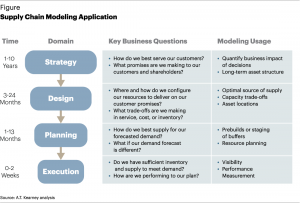Food & Beverage Ecommerce: How Online Shopping Impacts The Supply Chain, by Victoria Greene
By the end of 2018, experts predict that online food and drinks sales revenue will grow to $18 billion, an average 21.1% growth year-on-year since 2013. However, in comparison to the total share of ecommerce sales worldwide (over $1,915 trillion), there is much room for improvement within the industry.
As a study by Harris Poll last year found, only 31% of the 2,000 US adults surveyed had purchased food online within the last six months. However, of that 31%, 16% had purchased fresh produce and continue to do so on a regular basis. This indicates that consumer demand for ecommerce food and drink is steadily on the increase. Therefore, maintaining and building upon rising levels of consumer trust will be key to future-proofing supply chain processes in the years to come.
Here are some of the ways online shopping is transforming the food and beverage supply chain.
1. Visibility of Goods.
Maintaining accurate sales and lead-time data, in real-time, is crucial to maintaining round-the-clock efficiency. A study conducted by Berlin Technical University (BTU) uncovered that retailers and logistics companies found supply chain transparency and ecommerce to be the key consumer-driven trends influencing the future of food and cold supply chain logistics.
With increased sales demand, investment in multi-party networking infrastructure can help increase visibility between service providers, manufacturers, and retailers to provide dynamic inventory control in an increasingly fragmented, global supply chain.
2. Efficient Warehousing.
Cold chain logistics is becoming increasingly reliant on technologies to help maintain high standards on a global scale. Each nation carries its own standards and certification, so maintaining compliance across all states requires transparent communications and reliable monitoring, with real-time actionable data such as live equipment readings and alerts for machinery in need of maintenance.
Food Safety Management Systems often automate aspects like document control, good agricultural practice monitoring, risk management, and even staff training. This makes it possible for all parts of the global supply chain to successfully implement HACCP from a centralized management platform.
3. Marketing Insight Data
Marketing analytics data can help brands target advertising and promotions to help push products that may be sourced from local suppliers, or appeal to the individual’s preferences.
For a product launch, personalized discount offers within a local city can help businesses shift supply as and when required to meet increased short-term demand.
Similarly, personalization data and on-demand services through dedicated online platforms can help to enhance the online shopping experience. Murray’s Cheese, for example, created a virtual gift crate experience for their online shoppers, delivering hand-picked gourmet food parcels with the orders fulfilled through MOM/ERP integration technologies.
4. Focus on Local Suppliers
Delivering food and beverages the last mile to consumers’ doors is a huge challenge for online food and drinks retailers, as ecommerce fulfillment centers cannot open fast enough to keep up with consumer demand for locally sourced goods.
In meeting some of the logistical challenges, many retailers offer ‘click and collect’, promoting convenience in picking goods and paying for them, as well as accepting alternative methods of payment, like PayPal. Third Party Logistics companies (3PLs) can help smaller businesses load-balance their inventory based on customer location and seasonal fluctuation data.
Lower cost POS systems technology, marketing automation software and opening an online store with easy-to-use ecommerce hosting subscription services allow suppliers and third parties to open up small businesses, capitalizing on the ‘localvore’ produce trend and joining forces with nearby suppliers to make dedicated local grocery delivery services that supply fresh goods on demand.
5. Strategies For Building Trust
With products like electronics, the specifications are clear and uniform across all products. With food purchasing decisions, no amount of provider research can satisfy a customer in the same way. These buying decisions, just like with food shopping in real life, are done quickly and rely heavily on the customer trusting in your brand to deliver safe food and drink products for consumption.
Live chat applications may be a good way of providing reassurance for browsers who need help in making the right purchasing decisions. These automated chat applications can provide immediate answers to any frequently asked questions on everything from product sourcing to delivery time estimates (even down to the hour in cases of food and beverages delivery).
They can also analyze past browsing data to provide product recommendations and recipe ideas, maximizing the chances of upselling to website visitors or recommending products to their friends.
AlI, when combined with supply chain management, can also help businesses to anticipate demand and use predictive stocking systems to offer split-second incentives to hungry online shoppers likely to make impulse buys.
By embracing ecommerce technologies, food and beverage companies can expand their markets, safe in the knowledge that every aspect of the supply chain is handled through a carefully monitored, centralized system. From a supplier’s perspective too, ecommerce brands present a huge, untapped source of revenue, provided that transparency and automated efficiency measures are brought in to protect brands and customers alike.

